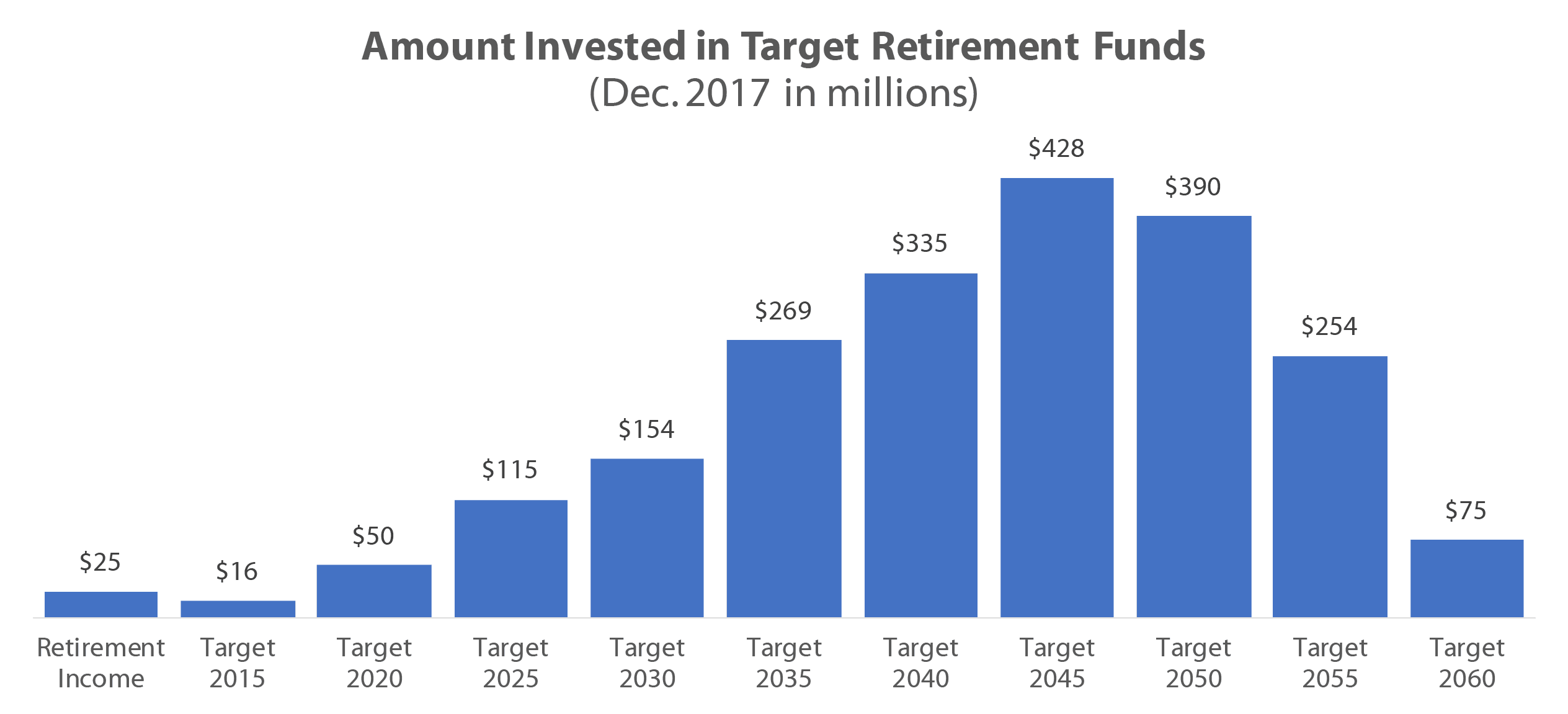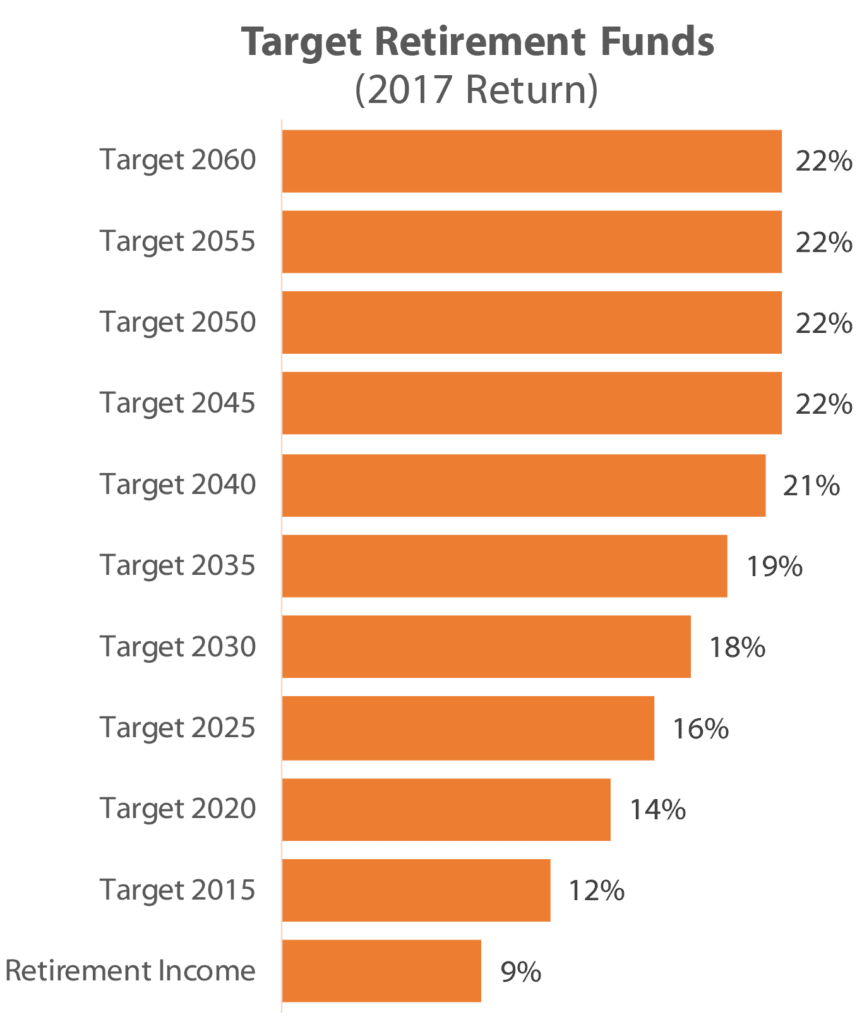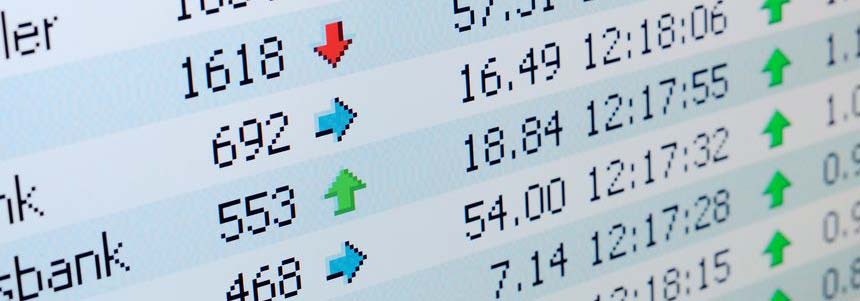Amazon employees have invested $1 billion of their 401(k) retirement funds[1] in their employer’s stock—by far the single largest holding in Amazon’s 401(k) plan.
Luckily, this was a very good bet during 2017 (up 56%) and has continued to be an outstanding investment during 2018 (up over 70% as of end of September). Implying a potential gain of $700 million in the first 9 months of this year!
That being said, it appears that Amazon employees slightly reduced the number of shares they own in their 401(k) accounts. At the end of 2016, employees held the equivalent of approximately 866,000 shares[2]. But by the end of 2017—after another year of contributions and 65,000 new active participants—holdings declined to roughly 854,000 shares[3].
So although the dollars invested continued to grow during 2017 (due to market appreciation), both the number of equivalent shares held and percentage of total 401(k) assets declined slightly.
Good Bet?
Which raises the question…should Amazonian’s continue to hold employer stock in their 401(k)? If so, how much is too much?
There is little doubt that holding AMZN was a good decision over the past decade. No other plan investment option produced a return anywhere close to Amazon stock. But now what?
Amazon.com is one of the most valuable companies in the world with a market capitalization of nearly $1 trillion (as of Q3 2018). Could it double again? Possibly, but you do have to start wondering. For now, Apple is the only company with a market cap above $1 trillion. Will Amazon’s earnings continue to grow rapidly enough to justify the high Price-to-Earnings (P/E) ratio?
On a more personal level, Amazon employees should evaluate their total exposure to Amazon equity. Given Amazon’s heavy use of Restricted Stock Units (RSU) for compensation, it is likely many employees already have significant exposure without any further investment.
Not to mention, as one of the largest companies in the world, any investment in a broad market index (like an S&P 500 index fund) further adds to your exposure. Amazon currently accounts for over 3% of the S&P 500 index and an even larger percentage of most growth oriented mutual funds.
For those employees holding Amazon stock in their 401(k), be sure to check out my prior post on the potential tax benefit available on the unrealized appreciation when you take a distribution. Save Taxes on 401(k) Distributions
What else can we learn about how Amazon.com employees choose to invest for retirement?
Preference for Packaged Portfolios
The second largest 401(k) plan holding is the Vanguard Institutional 500 Index Fund. This fund tracks the performance of the S&P 500 Index, representing about 500 of the largest companies in the United States—great choice as a core investment holding.
But, the next five largest holdings are all Vanguard target retirement funds (packaged funds of funds). These funds are designed to shift the underlying asset allocation within the fund as the target retirement year approaches—shifting to more bonds and fewer equities. In other words, they become more conservative as time passes. This allocation shift is referred to as the funds glide path.
The largest of these holdings is the Target Retirement 2045 Trust, designed for people in their thirties planning to retire around the year 2045. In total, 61% of plan assets (excluding holdings of AMZN stock) are invested in one of the target retirement funds.

Target retirement funds are built around the principle that an investments expected long-term return is related to the risk of the investment. More risky investments provide a higher expected return. When young, with many years before retirement, investors should take more risk in anticipation of higher returns. When older, nearing retirement, investors should be more conservative since they have less time to recover from short-term market losses.
Last year provided a textbook example of this principle. The longer dated target retirement funds (i.e., the more risky) provided the highest returns. Funds for those looking to retire relatively soon, provided positive, but lower returns.

In poor investment years—when the stock market is down—you should expect the opposite result. The longer dated funds likely will be down the most. Funds for retirees and near-retirees should show small gains or only modest losses. At least that is the theory.
For more details on Amazon’s 401(k) plan and the investment options available, please visit Amazon.com 401(k) Plan.
“Risk On” Rewarded
Regardless of what participants invested in during 2017, they likely realized a good return. Risk was rewarded last year with higher risk investments substantially outperforming more conservative options. We already showed that longer dated target retirement funds delivered gains of over 20% and AMZN itself returned 56%. The table below shows that the more focused equity investments available in Amazon’s plan almost all delivered >20% returns whereas more conservative fixed income investments lagged at 5% or less.
Total Return from Individual Funds/Trusts (2017)
| Equity Investments | 2017 Total Return |
| Vanguard Institutional 500 Index Trust | 22% |
| State Street Russell Large Cap Growth Index Fund | 30% |
| Vanguard Total International Stock Index Fund | 28% |
| Vanguard Explorer Fund Admiral Shares | 23% |
| American Beacon Small Cap Value; Institutional | 9% |
| Vanguard FTSE Social Index Fund | 24% |
| Fixed Income Investments | |
| Vanguard Retirement Savings Trust III | 2% |
| Vanguard Institutional Total Bond Market Index Trust | 4% |
| PIMCO Total Return Funds: Institutional | 5% |
The Details
The table below provides a consolidated view of how Amazon.com participants elected to invest for their retirement. Amazon’s 401(k) plan grew from 206,000 to 271,000 active participants during 2017. In addition, total plan assets grew from $2.8 billion to $4.5 billion.
Plan Assets as of 12/31/2017 (from the July 2018 filing of Form 5500)
| Investment | Ending Value (millions) | % of Total |
| Amazon.com (company stock) | $ 999 | 22% |
| Vanguard Institutional 500 Index Trust | $ 441 | 10% |
| Vanguard Target Retirement 2045 Trust Plus | $ 428 | 10% |
| Vanguard Target Retirement 2050 Trust Plus | $ 390 | 9% |
| Vanguard Target Retirement 2040 Trust Plus | $ 335 | 7% |
| Vanguard Target Retirement 2035 Trust Plus | $ 269 | 6% |
| Vanguard Target Retirement 2055 Trust Plus | $ 254 | 6% |
| State Street Russell Large Cap Growth Index Fund | $ 168 | 4% |
| Vanguard Target Retirement 2030 Trust Plus | $ 154 | 3% |
| Vanguard Total International Stock Index Fund | $ 142 | 3% |
| Vanguard Target Retirement 2025 Trust Plus | $ 115 | 3% |
| Vanguard Explorer Fund Admiral Shares | $ 105 | 2% |
| All other | $ 683 | 15% |
| Total Assets (excluding participant loans) | $ 4,483 | 100% |
[1] Department of Labor; Form 5500 (filed July 10, 2018)
[2] Based on invested value of $640 million and a 2016 year-end stock price of $749.87
[3] Based on invested value of $999 million and a 2017 year-end stock price of $1,169.47


